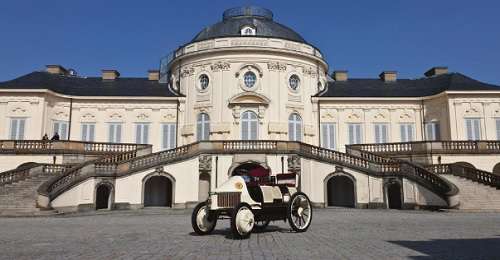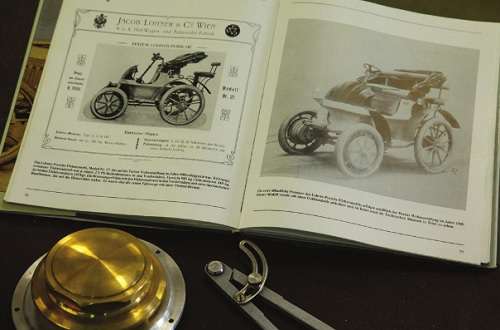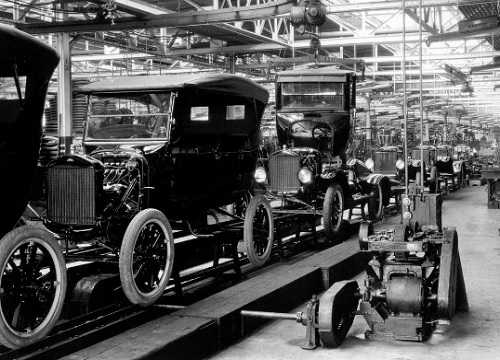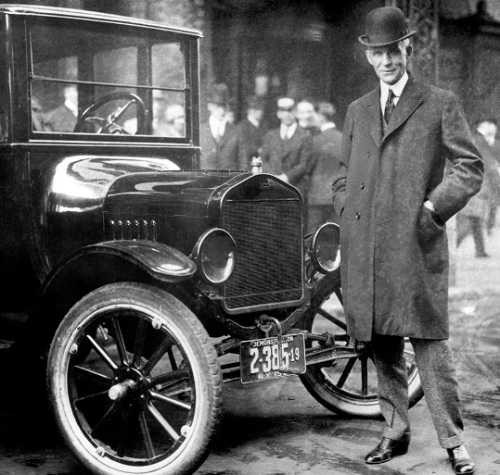By the 1920s, virtually every electric car manufacturer had gone out of business or thrown in the towel and moved on to making gasoline-powered cars. In the space of just two decades the electric car had gone from a technology that, in the words of Electrical World magazine, ‘has no rival’ to being utterly redundant.
Some of the big names, like Baker and Milburn, attempted to diversify into commercial vehicles, where there was still a market for light, electrically powered trucks, but demand for cars had all but dried up. By the mid-1920s the gasoline-engined motor car had the market in a vice-like grip.
The battle for supremacy was over and electricity had lost. The victory was so overwhelming that, within a few years, the electric vehicle had been virtually erased from automotive history. The electric pioneers were overlooked or consigned to a footnote in history as mere technological curiosities.
How Did This Happen?
In simple terms, the success of the internal combustion engine is easily explained – 1 litre of petrol provides the same energy as a 50-kilo accumulator – but manufacturers of electric cars quickly recognized this drawback and refocused their marketing efforts on ease-of-use and in-town convenience. For a while, conventional wisdom held that gasoline cars would do the long-haul trips and electrics would dominate in the towns and cities. However, this theory only held good as long as automobiles were the playthings of the rich and famous, who could afford two vehicles.
When Henry Ford introduced his keenly priced Model T, automobiles became an aspirational purchase decision for the middle classes. However, the average worker couldn’t afford the luxury of buying a second vehicle solely for in-town use. A choice had to be made and the gasoline automobile required the least compromise. Ultimately, the gasoline engine served society’s needs better than a battery-powered electric motor.
In some ways, the electric car companies were their own worst enemy. Firms like the EVC threw away a golden opportunity to create economies of scale by never really nailing down the specifications of their cars. Instead, vehicles were made in batches with whatever parts were available. This necessitated a considerable amount of hand finishing to ensure that everything fitted together properly. In some cases, this policy even extended to different batteries. Maintenance soon became a problem for harassed owners.

Industry efforts to publicize the advantages of electric technology were often lacklustre and, even in a market as potentially lucrative as North America, it took the interest of the electricity generating companies before a national association was set up to extol the virtues of going electric. And even then, the manufacturers and the central stations spent more time arguing amongst themselves than proselytizing the electric automobile.
More seriously, the technology did not advance fast enough. After all, the claims made for the first Electrobat, particularly in regard to the vehicle’s range-to-empty, weren’t so very different to the performance figures claimed for the Milburn Light Electric more than a decade later. Despite headline-grabbing initiatives like the 1,000-mile (1,600 km) endurance run, by cars from the Samuel Robinson Bailey Company and Detroit, to publicize the efficiency of Edison batteries in 1910, electrics were always at a significant disadvantage to their arch rivals.
Attempts to ameliorate this by developing petrol–electric hybrids, like the Semper Vivus, were too expensive and too unreliable to provide a viable alternative.
However, it would be wrong to assume electric car technology wasn’t refined during this period. In 1913, a review commissioned by the, admittedly biased, Electric Vehicle Association of America found that automobile transmissions, gears and ball bearings were anything up to 50 per cent lighter than they had been at the turn of the century. Closer manufacturing tolerances and better materials had improved their efficiency by the same amount, whereas their lifespan had more than doubled. Electric motors had evolved, too.
They were smoother and easier to drive – but electric starters had made petrol engines just as straightforward. The design of electric automobiles also changed. Manufacturers eschewed the horseless carriage for a more functional shape that we would recognize as a modern motor car – bonnet, body and rear boot. In doing so, electrics aped the designs that had become the norm among gasoline-engined automobiles.
And then there was the battery. Although Thomas Edison’s hopes of creating a super battery capable of trading blows with a gasoline engine didn’t materialize, his nickel-iron design was still a huge improvement over the old lead battery. It was also designed with vehicle applications in mind, and thus less likely to fail in a hostile environment, and had a longer lifespan.
Edison’s invention still had its drawbacks, though. It was sensitive to cold and the voltage would drop precipitously when the battery was under severe load – making ascents of steeps hills a stressful affair. It was also expensive. Edison’s battery advances did, however, provoke Exide into redoubling its efforts to develop the lead-acid battery. The response was a thinner plate design with greater energy density, a better range and more durable construction, known as the Ironclad.

However, then, as now, the battery remained the electric vehicle’s Achilles’ heel. Owners could not rely on an electric car to transport them more than a modest distance beyond urban limits and the problems of range were exacerbated by freezing weather, poor roads and steep hills. The technical drawbacks were frequently compounded by overcharging due to the inaccurate method of relying on an ammeter to indicate how much energy had been lost by the battery during a journey.
This was a very crude method of calculating how long to charge a battery. Careless overcharging could easily boil a battery – leading to premature failure and even the risk of an explosion. Manufacturers tried to convince owners that the ammeter made battery charging child’s play. On the contrary, poor ammeters (some weren’t even connected correctly) were a major contributory factor in premature battery failure. Even the central stations, which looked after customers’ cars, cabs and trucks, often neglected battery maintenance.
Some critics have cited the failure to create an electric vehicle infrastructure as the main reason why electric vehicles failed to gain traction in the market. Recharging stations could only be found in big cities – and even then only for the wealthy élite – whereas gasoline was more easily available and at a far cheaper cost. Evidence for this theory can be found in America, where a comprehensive infrastructure in some cities led to increased interest in electric vehicles. When the local Edison central station set up the Boston Electric Garage Company in 1909 and built ‘the largest electric garage in New England’, the number of electric vehicles more than doubled in less than a year.
The efforts of the Electric Vehicle Company, which at its peak was the largest owner/operator of electric vehicles in the United States and, most probably, the world, came closest to creating the ideal charging infrastructure. However, the EVC suffered production problems, natural disasters, in-fighting and a predatory takeover by a syndicate more interested in stock options, complex finance deals and bogus patents than the development of a successful manufacturing/operating business.
Although the EVC did establish a network of regional affiliates throughout America, they lacked the support and long-term financial stability they needed to prosper. By 1902, all of them had closed or declared bankruptcy. Although the New York operation soldiered on for a few more years, mainly based around the Central Park area, a downturn in the economy would see the EVC itself declared bankrupt in December 1907. With it went any realistic prospect of building a national infrastructure for cabs, commercials and private cars. In Europe, efforts to promote electrics, such as the creation of 700 charging stations in France in 1901, were less successful.
Infrastructure issues were less of a problem for cars that ran on gasoline. Although the world’s first purpose-built petrol station, in St Louis, Missouri, didn’t open until 1905, many pharmacies, hardware stores and even blacksmiths sold gasoline as a lucrative sideline long before then. Demand took off when Henry Ford revolutionized the motor industry by selling a cheap car that opened up the joys of ownership to the middle classes. By happy coincidence, America was enjoying an oil boom (sometimes called the gusher age due to the large number of wells being drilled at the time) following the discovery of vast reserves in Texas.
The horse-drawn era quickly drew to a close. It was replaced by the horsepower era, which was fuelled by the availability of cheap oil and gasoline. In total contrast, outside the major cities, no serious effort was ever made to alleviate fears of electric vehicle range anxiety and to encourage widespread adoption of the battery-powered car. Anyone wishing to travel for a greater distance than 50 miles (80km) effectively found their progress limited by a public highway system devoid of a charging infrastructure.

Price was also an issue. Electric cars, with their expensive and often fragile batteries, were at a major cost disadvantage, to gasoline cars.
The final nail in the coffin was the arrival of the Model T Ford. Although it was an innovative design, with a single crankcase/cylinder block and unitary engine/gearbox construction, the major factor in the Model T’s success was its incredible value. It made its world debut at the London Motor Show at Olympia in 1908 and went on sale in Britain a short while later priced at £225. Ford’s endless quest for cost-reductions drove the price down relentlessly until it became impossible to achieve any more savings without changing the basic design of the car.
The idea of cheapening the design was anathema to Ford so, when a conveyor-belt manufacturing system helped reduce the assembly time of the flywheel magneto assembly from 20 to 13 minutes, he tried a simple experiment.
A bare chassis was pulled through the factory using a rope and windlass with workers adding key parts as it moved past. The results were startling. A static-build took Ford’s best men more than 12 hours. Using the rope trick his workforce could do the same thing in a mere 5 hours 50 minutes. The assembly line – a method still used by every large car factory to this day – had been invented and soon output at Ford’s factories soared to record levels.
By 1915, the cost of a Model T had been cut by almost 50 per cent to just $440 in its domestic market – still a lot of money but eminently affordable for a middle-class wage earner. Despite its enormous output (more than half-a-million cars by 1916) Ford could barely keep up with demand. By 1919 every other car in the world was a Model T, or ‘Tin Lizzie’ as it became affectionately known. Electric car manufacturers took a disastrously high-handed attitude to the increasing utilitarian role automobiles were playing. Although some tried to build a cheaper car, many felt there was no market for a cut-price electric (!) because at such a price point it would represent a buyer’s first car, whereas, in their blinkered view, the electric was supposed to be a second car purchased for urban use only.
An electric automobile may have been quieter and easier to drive, but the massive price differential was a dealbreaker for many would-be motorists.
With the benefit of hindsight it seems strange that it was two decades before someone had the idea of mass-producing cars, especially in America, a country steeped in the advantages of large-scale manufacturing – having successfully applied it to firearms, watches, sewing machines and bicycles in the previous century.
Of course, some far-sighted entrepreneurs did foresee the demand a cheap electric car would create. Among them was Charles Proteus Steinmetz, the genius engineer who developed the world’s first alternating current generators for General Electric and predicted (among others) the rise of television, power stations and solar energy.
Steinmetz hoped to build a relatively cheap electric car in co-operation with Harry Dey, an electrical engineer from New York. He had been converted to the benefits of electrical power in 1914 when he bought a model 48 Detroit Electric Brougham and was confident his car – co-developed alongside a truck – was capable of dethroning the gasoline car.

The Steinmetz Electric Motor Car Corporation’s first vehicle went on sale in 1917 for the very reasonable price (for an electric car) of $985. But by then the sticker price of the Model T was less than $360 and the Steinmetz car never proved popular. Worse, Steinmetz was sued by Patrick Hirsch who claimed that he had helped fund the company but hadn’t seen a cent for his efforts. Hirsch claimed he was due 23 per cent of the company, with the bankers holding 51 per cent and Steinmetz 24 per cent. The business closed soon after Steinmetz’s death in 1923 amid recriminations over ‘official’ sales figures, which appeared to have been inflated.
High purchase cost, unreliable batteries, poor infrastructure and limited range – any one of these issues would have been damaging for an emerging new technology like electric cars, but taken together the drawbacks meant battery cars could never win the struggle with gasoline automobiles.
Even today, electric cars face many of the same issues. The difference between then and now is a general acceptance by governments, manufacturers and customers that the internal combustion engine is reaching the end of its useful life and a cleaner technology needs to be found.